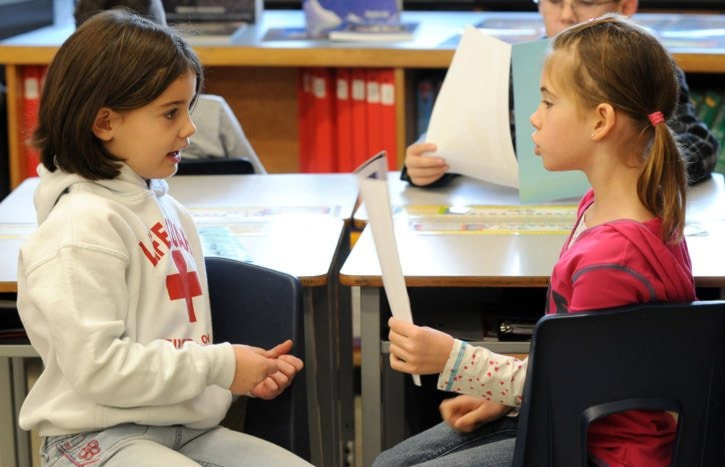Nerine Graham dreams of one day seeing aboriginal culture taught seamlessly in Chilliwack schools.
She doesn’t want the culture to be taught for one month and then tucked away for the next nine months, never to be spoken of again. She doesn’t want the culture to be exclusive. And she doesn’t want students of First Nation descent to be taken out of the classroom for separate lessons, away from all other students in the class.
“We live in the middle of Sto:lo territory; this is part of our local history,” said Graham, an aboriginal education coordinator with School District 33.
“Knowing where you live and understanding the people around you, that’s important.”
Chilliwack school district’s Lit Kits are clearing the path for Graham’s dream to come true.
The kits are a literacy initiative, created by the aboriginal education department and curriculum department, chock full of aboriginal culture and local history.
They are tub-sized treasure troves filled with First Nations books that include Rough Face Girl, Red Parka Mary, The Raven, Shi-Shi Etko, The Elders are Watching, and Frog Girl. They also have aboriginal artifacts such as rabbit fur, jewels, moccasins, toques, choke cherries, and leather to connect the young readers to each story. Almost all of which are authentic and many made by the locals.
“We didn’t want to assume that students knew what everything was, so we tried to add as many different objects as we could that could bring the stories to life,” said Graham.
The signing of the Aboriginal Enhancement Agreement last year prompted Graham and Shawna Petersen, vice principal of curriculum, into action.
The Aboriginal Enhancement Agreement is a working agreement that was signed between Chilliwack school district, Chilliwack’s aboriginal communities and the B.C. Education Ministry and is meant to make education more meaningful for aboriginal students.
Something many believe is long overdue.
In Chilliwack, approximately 15 per cent of the student population (1,794 students) is aboriginal, representing 12 different bands. Of those students 312 live on reserve, and 1,482 off reserve.
The school district has consistently struggled to get its aboriginal students to graduation.

According to the ministry of education’s 2010-11 completion rate data, just 55.6 per cent of aboriginal students who started in the district six years prior graduated.
The Lit Kits are one initiative towards improving those numbers.
After working extensively with members of the Sto:lo, Coqueleetza, and Cheam communities, and with teacher representatives from grades 1-6, 18 interactive kits were created with six different themes.
Oral language is at the forefront of each.
A large component of the elementary school curriculum is oral language, but “we didn’t want kids to just stand up and do speeches,” said Petersen. “We wanted it to be more interactive.”
With Lit Kits, some of the oral lessons include students predicting stories based on a book’s cover; using their memories to piece pictures of a story together; and using their senses to describe a story.
In Hollie Redden’s Grade 3 class at Unsworth elementary, students walked around the classroom answering thought-provoking questions about the book All the Stars in the Sky.
Before reading the book, Ms. Redden asked her class what they were wondering after seeing the front cover.
“I wonder why the coyote is sitting on six bows and arrows,” said one student.
“I wonder if a hunter is going to kill the coyote and the coyote is going to become a constellation in the sky,” said another student.
“I wonder if maybe the constellations are the coyotes relatives who died,” said another.
Those young wonderings had both Graham and Petersen glowing.
“We use to pull aboriginal kids out of their class and do these kinds of lessons in a separate room,” said Graham.
“When you’re pulling students out for these lessons, you’re only impacting three or four of them,” added Petersen.
“But when you bring the history and understanding into the whole classroom, now you’ve got 24 students who understand.”
kbartel@theprogress.com
twitter.com/schoolscribe33
